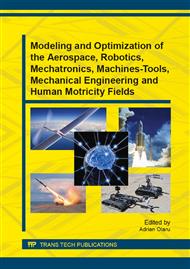p.341
p.352
p.361
p.369
p.375
p.385
p.395
p.401
p.406
Emissions Level Approximation at Cold Start for Spark Ignition Engine Vehicles
Abstract:
This paper present a study regarding the emissions produced at the engine cold start. Also, the paper presents a brief survey of current extra emissions estimation methods. The main goal of this work is to describe the relative cold start extra emissions as a function of exhaust gas temperature. Experimental research has been done for a light vehicle, Dacia Sandero, equipped with a 1390 cm3 Renault spark ignition engine (Power = 55 kW at 5500 rpm). There were been made several tests, in different temperature conditions, in the could season, using a portable analyzer, GA-21 plus (produced by Madur Austria). The parameters measured with the analyzer and used in the analysis are: CO, NO, NOx and SO2. It was concluded that the highest pollutants values are recorded until the point when the catalyst comes into operation (when the gas temperature entering the catalyst is approx. 200 oC) and exhaust gas temperature is 40-50 oC. In order to accomplish a mathematical approximation of CO, NO and SO2 in function of exhaust gas temperature, logarithmic approximations and polynomial regressions were used. The curves resulted from the mathematical model can be used to approximate the level of CO, NO and SO2, for similar vehicles.
Info:
Periodical:
Pages:
375-384
Citation:
Online since:
June 2014
Authors:
Keywords:
Price:
Сopyright:
© 2014 Trans Tech Publications Ltd. All Rights Reserved
Share:
Citation:


